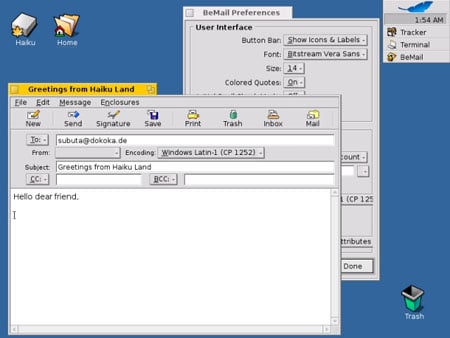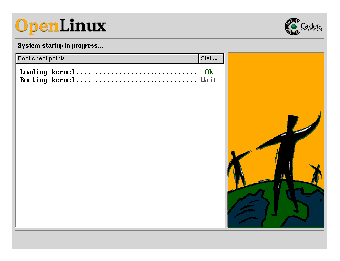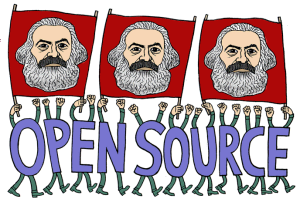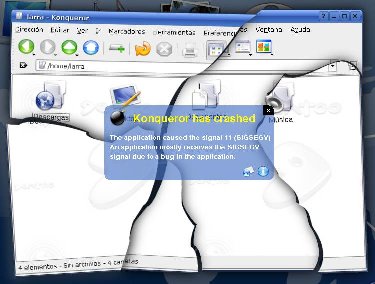Original URL: https://www.theregister.com/2010/06/30/linux_chronicles_part_one/
The Linux Chronicles, Part 1
From dot com Linux mania to something that actually works
Posted in OSes, 30th June 2010 10:58 GMT
Last Autumn I volunteered to review Windows 7. But in the following weeks, I found Linux to be preferable in many ways. This is pretty significant progress, and outside the 'community' has gone largely unnoticed, too - I haven't seen all that many Ubuntu stories in the Wall Street Journal. But what comes next is going to be pretty challenging for everyone involved – and that's what I'll look at here.
But first a bit of history, starting with a confession.
About ten years ago at around the peak of the dot.com bubble, I looked at the rate of progress that Linux had made, which was phenomenal, and decided that it was only a matter of time before every PC ran Linux. Now stop laughing there at the back, because it didn't seem quite so bonkers at the time.
If Linux was everywhere, I figured, and it soon would be, then systems vendors would need to compete by adding value higher up the stack. Apple already appeared to have made this calculation; Steve Jobs had interviewed Linus Torvalds a couple of years earlier, and why would he do that if he didn't want to swap out BSD for Linux, with its army of device driver authors?
At the time, too, Microsoft appeared to be embroiled in a fatal antitrust lawsuit, and one of the most likely remedies floating around was to hand control of Windows development to a consortium of vendors. That would surely seal its fate, because committees of vendors never do anything worthwhile, and would eventually lose interest. (In the end, this was touted as a remedy early in 2002, but nobody was interested in maintaining the hairball, quite wisely).
I'd spent a very happy year with BeOS as my primary OS, as it seemed to fulfil my primary requirement – that a computer is just a piece of crap that gets between you and what you want to do. For most people it's music (making or finding or playing), photos (viewing and printing) and reading the papers, the papers now coming in an amazing global variety of sources. If I noticed the computer getting between me and the task in hand, it was an annoyance. An OS had to be a very discreet tool indeed.

BeOS. (Actually, it's open source clone Haiku)
With its insane emphasis on performance, and all the UI you would ever need (ie minimal), BeOS had been a super choice. The only two things BeOS didn't do was view PowerPoint presentations from PR people and text retrieval. But that was a problem for PR people, who got a polite message requesting a PDF version. And as for find-by-content, I figured I would sit tight – something like Magellan or dtSearch would come along. [#]
But BeOS appeared to have succumbed to the Linux juggernaut, reckoning there was no future in operating systems. No matter, everywhere you looked, somebody was doing something to fix Linux's flaws. A real-time, SMP Linux would surely be good enough for BeOS fans. If the quality of the installation had gone from Yggdrasil peek and poke, to Caldera's slick graphical screens in a couple of years – well, wouldn't all the confusion over competing Desktops be sorted out?
At the same time I had a vague sense of unease, that something wasn't quite right with this picture.
I like shiny new things as much as anyone, and nothing is shinier than a New Idea: a clever new way of doing something. But I knew that the industry really wasn't very good at preserving the best of what it does. A lot of good ideas were lost into folklore. We had Java instead of Smalltalk. We had file systems with Extended Attributes, instead of real databases such as Pick and the AS/400. HTML most definitely wasn't SGML – and the hyperlinks only went in one direction.

It did seem amazing at the time, honest
And with Linux, specifically, apart from a lot of people who were talking a lot of self-evident baloney (Maslow's pyramid of needs, or comparing it to the development of the scientific method).
And there seemed to be a lot of people quite happy simply being there. They weren't driven by the bloody-minded impulse to believe that the way things are done is crap, and to do things a new way. A few years earlier I'd been a professional programmer and seen the industry do the same thing: every computer company had its own Unix [#], and many of them added minicomputer features as they fought the Unix Wars, forking, reunifying... until NT had the field to itself.
Was Unix itself just a cargo cult, a religion where pilgrims had to re-implement everything over and over again? I put such thoughts to one side, and reminded myself of the economics.
Well, dear reader - how wrong can you possibly be?
It just didn't happen and today Linux's share of desktops is a rounding error. It's almost too small to count. I think you'll know the reasons why, and I won't go over them. But foremost is one that isn't mentioned very much.
Dreaming things better
In the IT industry we spend a lot of time engaged in wishful thinking, and ignoring the reasons people give the benefit of the doubt and their dollars to incumbents. A new product really has to be several powers better than what the incumbent offers. Phone calls are now really free, but the phone companies are still here. The surge of Linux was powered by some pretty strange notions and not enough on real advantages for users.
It's easy now with the benefit of hindsight to predict that Microsoft would go on and on, surviving even Vista (and even Vista Plus) because the investment companies had made was so great. It could put bodies on the ground, generally technically excellent people to fix things. And it was offering real value for money with SQL Server.

We thought India and China would rise up and join the "movement", but guess what? They too saw computers as a means to an end. Many realised that time spent using Windows (or more specifically say, Illustrator or Outlook) endowed them with a transferable skill that could be used profitably. They had a choice, they wanted to have the same opportunities we do, and they didn't want a charity cast-off. The baloney about joining a new social movement (or revolution!) based on opposition to all known intellectual property was a colossal, patronising mistake.
Then last Autumn I had a chance to take stock. Or rather I invented one for myself.
The Ubuntu Revelations
As Windows 7 was being launched I mentioned that we needed a bit of an in-depth hands on. It was one of those volunteering efforts where you realise that you haven't taken a step forward, but everyone else had cunningly shuffled one step back. I protested that Tim Anderson had done us an excellent review – in fact a very model of concise writing – and there won't be a better two page summary of Windows 7 on the web. All in vain.
Oh, well. It's dirty work, but at least you can make it interesting. How would Windows 7 compare with Linux? I thought it would be a pushover, so handicapping it in favour of Linux, to make it more even, I used old as well as new hardware. The compressed air duster was applied to a Thinkpad X31 (Centrino 1.6Ghz), and I had use of a Dell D430 (dual core, 4200rpm disk).
The first stop was Xubuntu. This appeared to be just the ticket for a less-than-bleeding edge hardware spec. But Xubuntu didn't get on with my laptops. I found myself hunting down an ndis wrapper for an ancient and popular 802.11 card, just as I had done years ago. This was supposed to be Ubuntu, but leaner and meaner. Was this as good as it got?
I moved on to Kubuntu. KDE was as exactly as I feared.
Now you may already know this, but if you haven't followed open source development politics for ten years (and, er, maybe you have had something better to do) the tale of KDE is a fascinating and sad story. Something strange happened to KDE in the last decade. Ten years ago it was a robust, decidedly unglamourous desktop. The design was very German. It worked. They took pride in that, and not being like the flakey and fancy Gnome kids.
Then they went mad. They went 4.0.
The most pithy experience of KDE 4 was written by Slashdot user called orthogonal, and you can find it here.
KDE had seriously lost the plot, and steered into Strategy Boutique territory. (When you no longer have a product that satisfies users, bullshit is the only option.) This actually was a blessing for Linux, because with one of the two desktop environments removing itself from the picture, development focused on the one that was still waggling its little legs. It seriously blighted SuSE, a good choice back in the day. SuSE's font rendering was horrific.
So finally, and after too long, Ubuntu Karmic Koala went onto the Dell. And Ubuntu turned out to be quite smashing.
I don't know why I hadn't started with Ubuntu. It seemed to be trying a bit too hard, the last time I looked. It was the only distro with the Collected Speeches of Nelson Mandela, and a 13-part Lingala language lesson in the startup folder.
But Umbongo was truly a revelation.
Setting up Wi-Fi was simple. A 3G dongle worked first time. So did another, and then another. Ubuntu even found a peculiar printer arrangement of mine right out of the box, and without prompting (it's a Laser attached to the USB port of an Apple base station). This had stumped Windows - even Windows 7 with the aid of Bonjour. And when you put Ubuntu to sleep, it really fell into a deep, sound sleep, and then woke quickly and reliably ready for work. Windows XP had never done this – except perhaps on the day of its installation [#]. XP would more typically decide, at random, to beep loudly at 3am, just for the hell of it, or cause the X31 to turn on its fans - like a grumpy child having a nightmare. Ubuntu didn't. It was getting quite Mac-like.
And all the old reasons for using Linux were still there. Network operations were fast. You could customize the keystrokes that mattered (I could care less about most operations, but a few really do matter); the Debian installer was underneath. Security was not an afterthought or a “Message: we care” cue-card, as Thomas C Greene put it.
The menus were clean and logical. My only reservation was that the aggressive power management wasn't quite there – losing 15 minutes from XP with a three-ish hour battery, for example. But this was no worse than Vista or Windows 7, I figured, and I'd get round to fiddling with the power settings some day.
There were and are still rough edges. You didn't have to go very far to find them. As well as smoothing things out, Ubuntu had hidden a lot of options, and unlike SuSE, it wasn't so easy to find them. (This is true of the window controls shifting to the left, Mac-style, in Ubuntu 10. You have to know, or Google it, or download an Ubuntu "PowerTools" app to put them back over to the right. A simple clear setting would help.)
But I was impressed that Linux had found the benevolent dictator it needed to sort out the UI mess. This was the Shuttleworth effect – and he seemed to have done the impossible. I was particularly impressed by Ubuntu's mission to stomp out the very minor UI idiocies and inconsistencies that add up, such as inconsistent or nonsensical labelling or dialog messages.
So if it's got this far without anyone really noticing, what's next? That's what I'll explore in the second instalment. I fear this is where things get quite hairy, but even more interesting. ®
Bootnotes
[#] Back then I carried the Reg around with me – 20,000 html files - this was The World Before Google, and there were no fast or comprehensive search engines.
[#] By the time I reached Linux, I'd endured: BSD on a VAX, Microsoft Xenix, Ultrix, SunOS, AIX and OSF/1.
[#] There is an official scale of Windows cruftiness: see Verity Stobbs' State of Decay, Dr Dobbs Journal (August 2002 issue)
